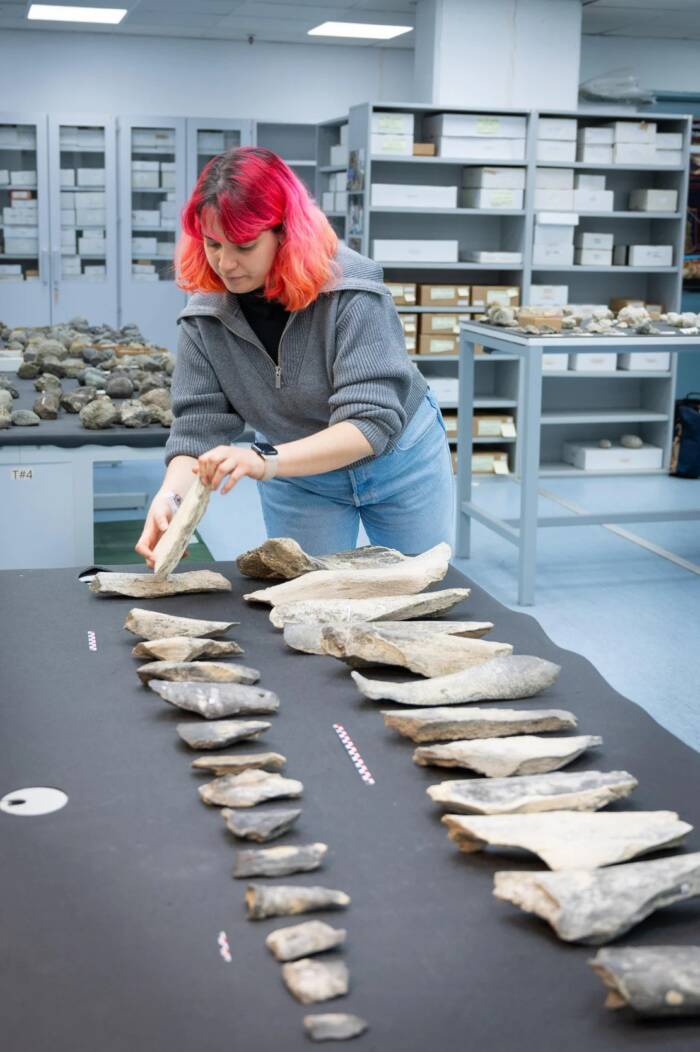“Unearthed Secrets: Ancient Bone Tools in Tanzania Could Rewrite the Story of Humanity’s Origins”
So, how did early humans use these tools? And who exactly made them?
How Prehistoric People Used Animal Bone Tools
The early humans who crafted these tools were purposeful in the bones they chose — large, sturdy ones from specific animals like elephants and hippos — and how they carved them. By carefully knapping the animal bones, they created tools that had one sharpened edge and one pointed tip. The work on the bones is so deliberate that it’s clear that the bones were purposefully carved and not shaped through natural processes.
However, researchers don’t believe that early humans made these bone tools for hunting. Rather, they were likely used for scavenging and slicing off chunks of meat from elephant and hippo carcasses.

CSICCSIC conservator Ana Seisdedo handling the bone tools.
Scientists still aren’t 100 percent sure who exactly made the tools. Archaeologists have previously found evidence of the hominins Homo habilis, Homo erectus, and Paranthropus boisei near the Olduvai Gorge site at various points throughout history. So far, the researchers have been unable to link the bone tools with any particular group.
In the end, the discovery of bone tools at Olduvai Gorge has exciting implications for the study of prehistory. It suggests that early humans were capable of carving bones much earlier than previously thought, which, in turn, suggests that they had strong cognitive capabilities.
“This discovery leads us to assume that early humans significantly expanded their technological options, which until then were limited to the production of stone tools and now allowed new raw materials to be incorporated into the repertoire of potential artifacts,” study lead author Ignacio de la Torre of the CSIC-Spanish National Research Council said in the statement.













